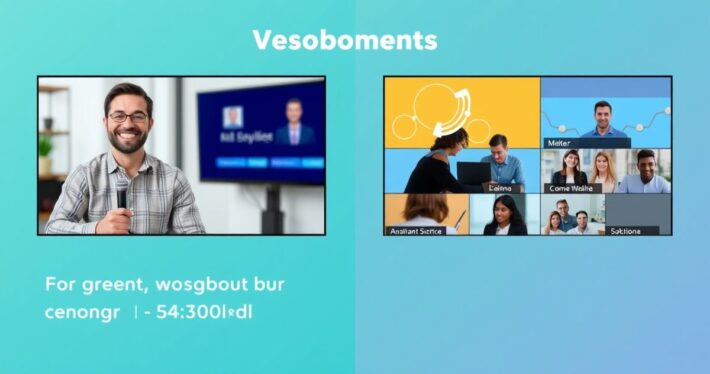Localization tips for webinars in non-native languages.

When it comes to webinars, language is more than just a medium of communication—it’s the bridge that connects you to your audience. But what happens when that audience speaks a different language? How do you ensure your message doesn’t just translate but resonates? Let’s be honest: throwing Google Translate at your script won’t cut it. Localization is the key to creating webinars that feel native to your audience, no matter where they’re from.
In this guide, we’ll explore actionable localization tips for webinars in non-native languages. Whether you’re targeting Spanish-speaking markets, expanding into Asia, or reaching a multilingual audience, these strategies will help you deliver a seamless, culturally relevant experience.
Why Localization Matters in Webinars
First, let’s address the elephant in the room: why is localization so important? Simply put, a poorly localized webinar can make your audience feel like outsiders. Imagine attending a webinar where the host uses idioms, cultural references, or humor that’s completely lost on you. It’s awkward at best—and alienating at worst.
Localization goes beyond translation. It’s about adapting your content to align with your audience’s cultural context, preferences, and expectations. Think of it as tailoring a suit: you’re not just adjusting the size; you’re making sure it fits perfectly for the occasion. When done right, localization can boost engagement, build trust, and even improve conversion rates.
Key Localization Tips for Non-Native Webinars
1. Understand Your Audience’s Cultural Nuances
Before you even start scripting, take time to research your audience’s cultural background. What motivates them? What are their pain points? What’s considered polite or offensive in their culture? For example, humor can be a tricky area. A joke that lands well in the U.S. might fall flat—or even offend—in Japan.
Pro Tip: Collaborate with native speakers or cultural consultants to ensure your content feels authentic.
2. Invest in Professional Translation
While AI translation tools like Google Translate have come a long way, they’re not foolproof. (Ever tried translating “It’s raining cats and dogs” into French? Yeah, it’s not pretty.) Professional translators understand linguistic subtleties and can adapt your message to sound natural in the target language.
Real-World Example: A SaaS company hosting a webinar in Germany decided to translate their script themselves. The result? Their German audience found the language stiff and robotic. After hiring a professional translator, their next webinar saw a 30% increase in engagement.
3. Adapt Visuals and Design
Localization isn’t just about words—it’s also about visuals. Colors, symbols, and imagery can carry different meanings across cultures. For instance, while white represents purity in Western cultures, it’s associated with mourning in some Asian cultures. Make sure your slides, graphics, and even branding align with your audience’s cultural norms.
4. Simplify Language for Clarity
When presenting in a non-native language, clarity is your best friend. Avoid complex sentences, jargon, or idiomatic expressions that might confuse your audience. Use simple, straightforward language to ensure your message is easily understood.
Case Study: A financial services firm hosting a webinar for Spanish-speaking clients initially used technical terms like “amortization” and “collateralized debt obligations.” After simplifying the language, they saw a 25% increase in attendee satisfaction scores.
5. Timing Matters
Time zones can be a headache when hosting global webinars. Schedule your event at a time that’s convenient for your target audience. And don’t forget to consider local holidays—hosting a webinar during Diwali in India or Chinese New Year in China is a surefire way to get low attendance.
6. Use Subtitles and Captions
Even if you’re delivering your webinar in a non-native language, subtitles can be a game-changer. They help clarify your message and ensure your audience doesn’t miss key points. Plus, they’re a lifesaver for attendees who might not be fully fluent in the language.
7. Test, Test, Test
Before going live, test your webinar with a small group of native speakers. Gather feedback on everything from language to visuals to timing. This step can reveal issues you might not have noticed and give you a chance to make adjustments.
Common Pitfalls to Avoid
1. Overlooking Cultural Sensitivity
Cultural missteps can damage your credibility. For example, using images of people in casual attire might be fine in the U.S., but in some cultures, formal attire is expected for professional settings.
2. Assuming One Size Fits All
Not all Spanish speakers are the same. The Spanish spoken in Spain differs significantly from that in Mexico or Argentina. Tailor your content to the specific region you’re targeting.
3. Ignoring Technical Limitations
Ensure your webinar platform supports the language you’re using. Some platforms might struggle with non-Latin scripts like Arabic or Chinese.
Real-World Success Story: Localization Done Right
Let’s take a look at a company that nailed localization. An e-learning platform wanted to expand into Brazil but struggled to connect with Portuguese-speaking audiences. They hired a Brazilian marketing consultant, translated their content professionally, and customized their visuals to reflect Brazilian culture. The result? Their webinar attendance tripled, and they saw a 40% increase in course sign-ups.
Conclusion: The Power of Localization
Localizing your webinar for non-native audiences isn’t just a nice-to-have—it’s a necessity in today’s global market. By understanding your audience’s cultural context, investing in professional translation, and adapting your content accordingly, you can create webinars that resonate on a deeper level.
So, are you ready to take your webinars global? Remember, localization isn’t just about speaking their language—it’s about speaking their heart.



